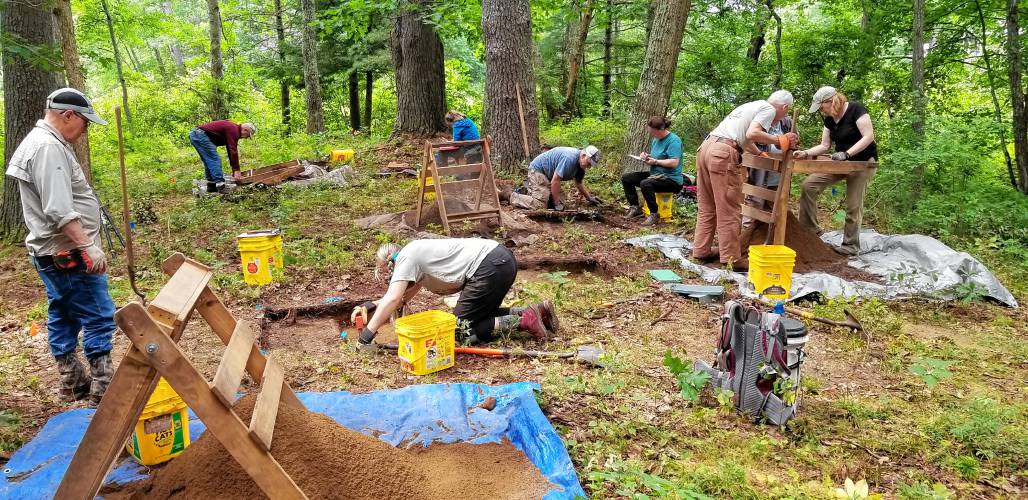An interesting field school will be taking place in Bear Brook State Park this summer, finding more details about New Hampshire’s deep past, and you can be part of it. But I’m not going to tell you where it is.
“People start looking and they can destroy things … by accident,” said Mark Doperalsi, New Hampshire’s state archaeologist. “They dig and don’t even realize what they’ve done.”
The class is called SCRAP for State Conservation and Rescue Archaeology Program, and it’s one of the longest-running citizen science projects in the state. The state and academic partners have been holding these field projects every summer since Jimmy Carter was president, with the usual pandemic gap in 2020, exposing hundreds of people to archaeological field work while gathering data about life in New Hampshire before Europeans started writing things down.
“We have all ages and experience levels. The largest groups are people who have just retired … and folks just out of high school or just graduated from college with an interest in archaeology,” said Doperalski. Over the years, some of those youngsters have ended up making a career in the field.
This year SCRAP will hold a pair of two-week sessions in June and July, during which archaeologists overseeing volunteers who have paid $40 (more if you want academic credit from Plymouth State University) will very, very carefully scrape and shovel and sift through some dirt on the banks of the Suncook River.
Being careful is key because this isn’t King Tut’s tomb, full of obvious artifacts.
The area was “probably a seasonal camp” for Native Americans during the archaic to woodland period, from several thousand to several hundred years ago. More precise aging awaits results from carbon-dating.
It was almost certainly a “resource procurement site” where a group stayed for weeks or months while hunting, fishing or gathering plants, Doperalski said. New England is full of such sites alongside rivers or streams. Some were quite large, such as Amoskeag Falls in Manchester, but most are small and difficult to find.
Most of the interesting things that people made at these sites are long gone, from woven baskets to cordage made of plants to the wooden shafts of tools or weapons. The only man-made objects left are stone tools or material flaked off rocks when making those tools, which means that information must be gleaned from things that show signs of having been in a fire.
For example, do fire-altered rocks appear to have been close together or are they scattered around? If it’s the former they enclosed a fire; the latter, they probably were used for stone boiling, in which rocks were heated and then dropped in water to heat it.
Even the patterns of layers of dirt atop each other can provide information, Doperalski said — how far down are signs of a fire? are there indications of multiple layers of settlement atop each other? — unless some blundering amateur has messed them up with a shovel.
This site was found last year via earlier field work that showed it’s a likely candidate, Doperalski said. If you were camping and looking for a tent site you’d probably like it.
“The areas that we find attractive today are the same areas that people find attractive over millennia. Well-drained areas near a water resource will be settled over and over,” he said.
Such consistency is a problem for archaeology, since settlements from the Colonial and American eras often wipe out evidence of pre-Contact sites. We’re lucky that nobody farmed this spot.
The two sessions will run from June 6 to 17, and June 20 through July 1. They’ll start by digging 50-by-50-centimeter shovel test pits at 8 meter intervals. If an artifact is found they’ll repeat the process at 4-meter intervals and then smaller, to hone in on the good stuff.
Fieldwork and instruction will be directed by Doperalski and will conform to standards for archaeology set forth by the National Park Service.
For more information, contact the NH Division of Historical Resources at 603-271-6433 or at nh.gov/nhdhr/SCRAP.htm.


 Return to the Concord Monitor
Return to the Concord Monitor